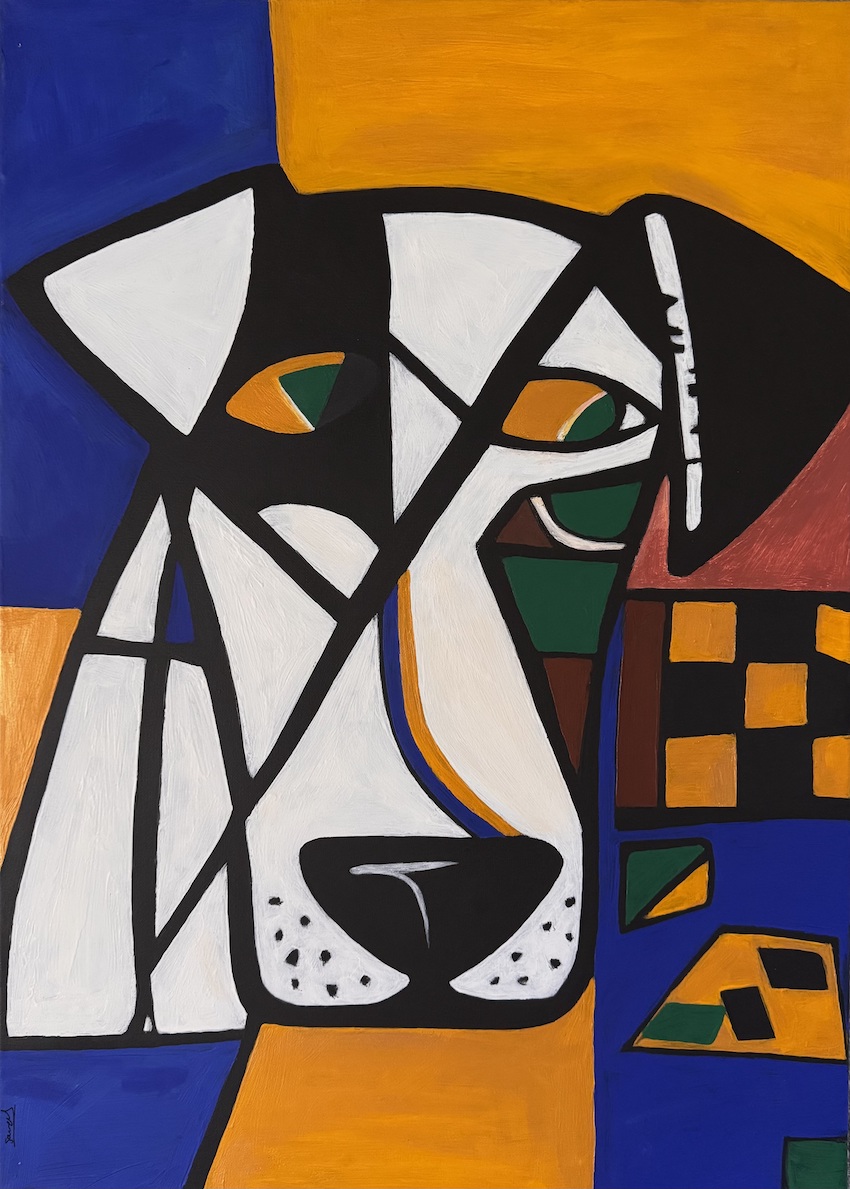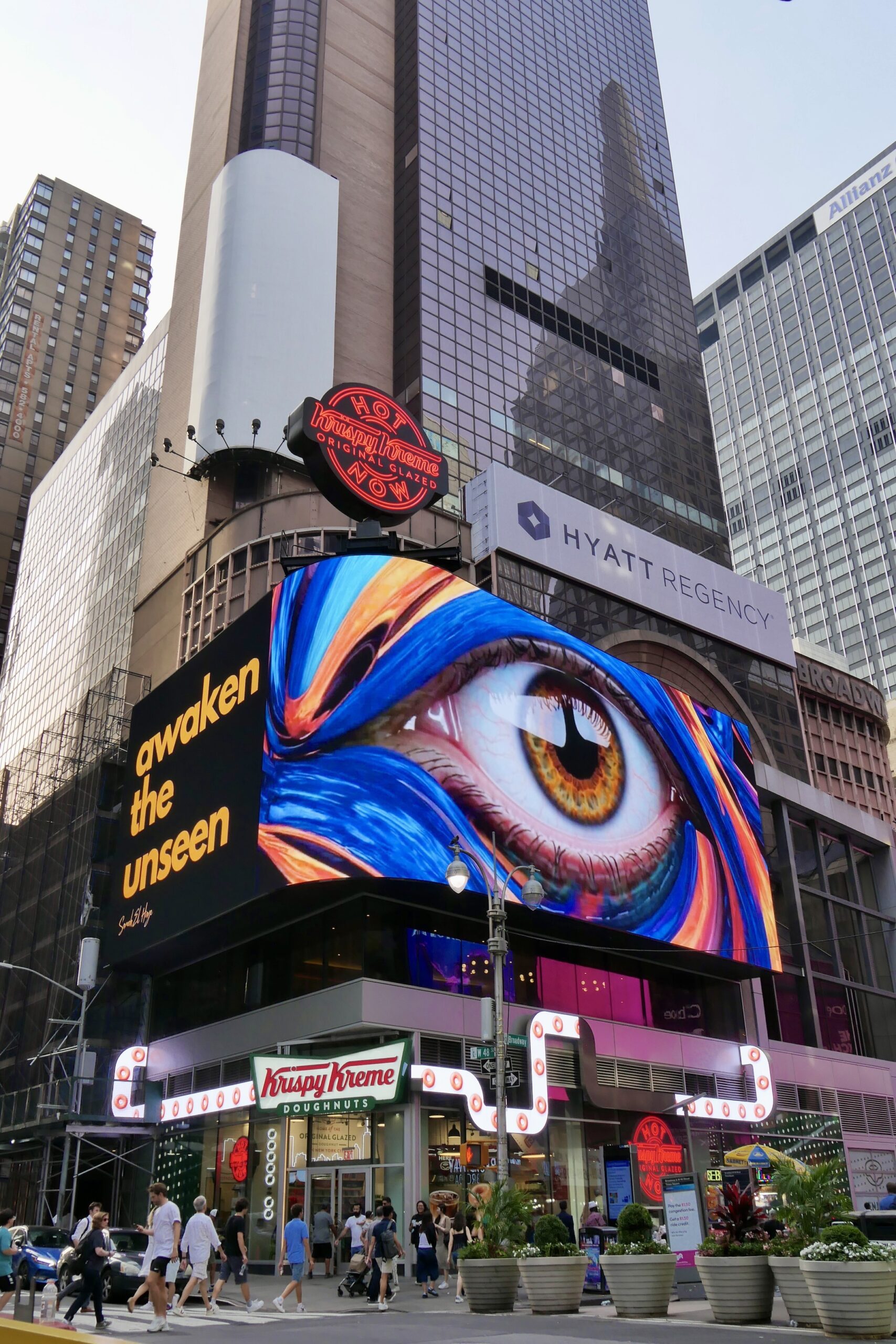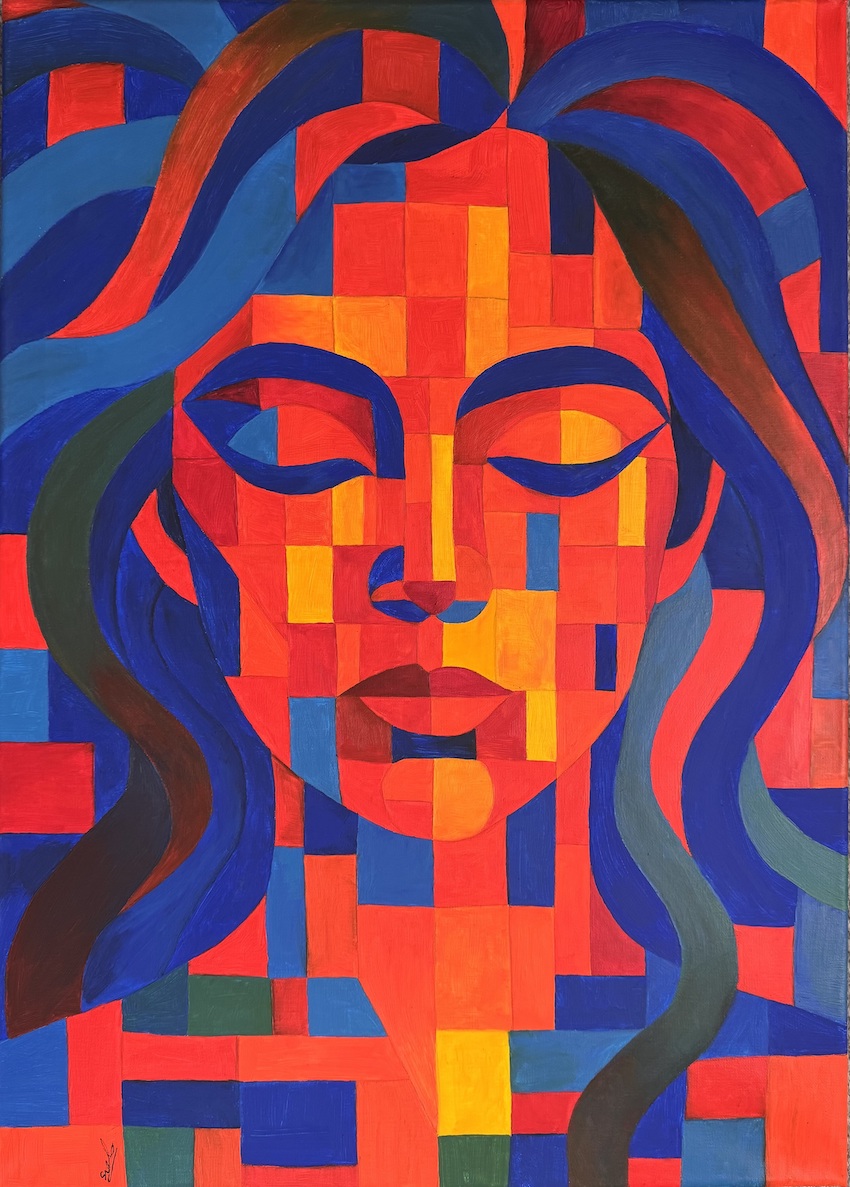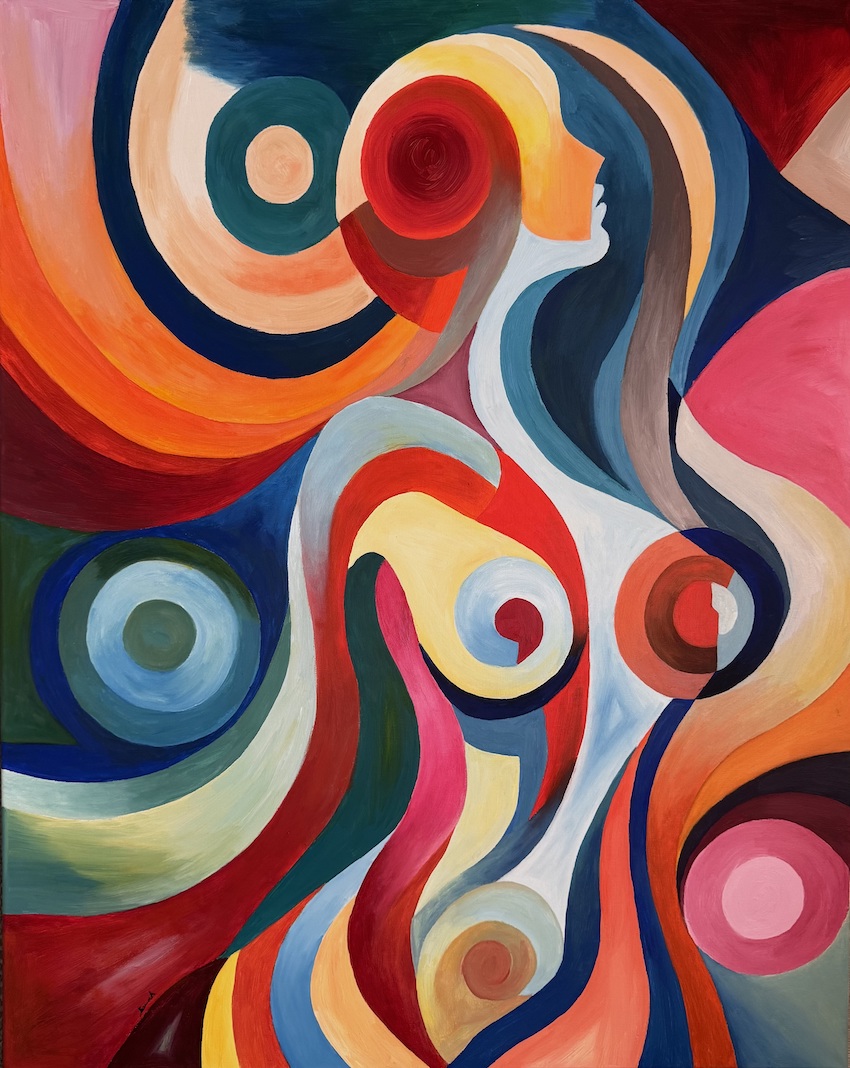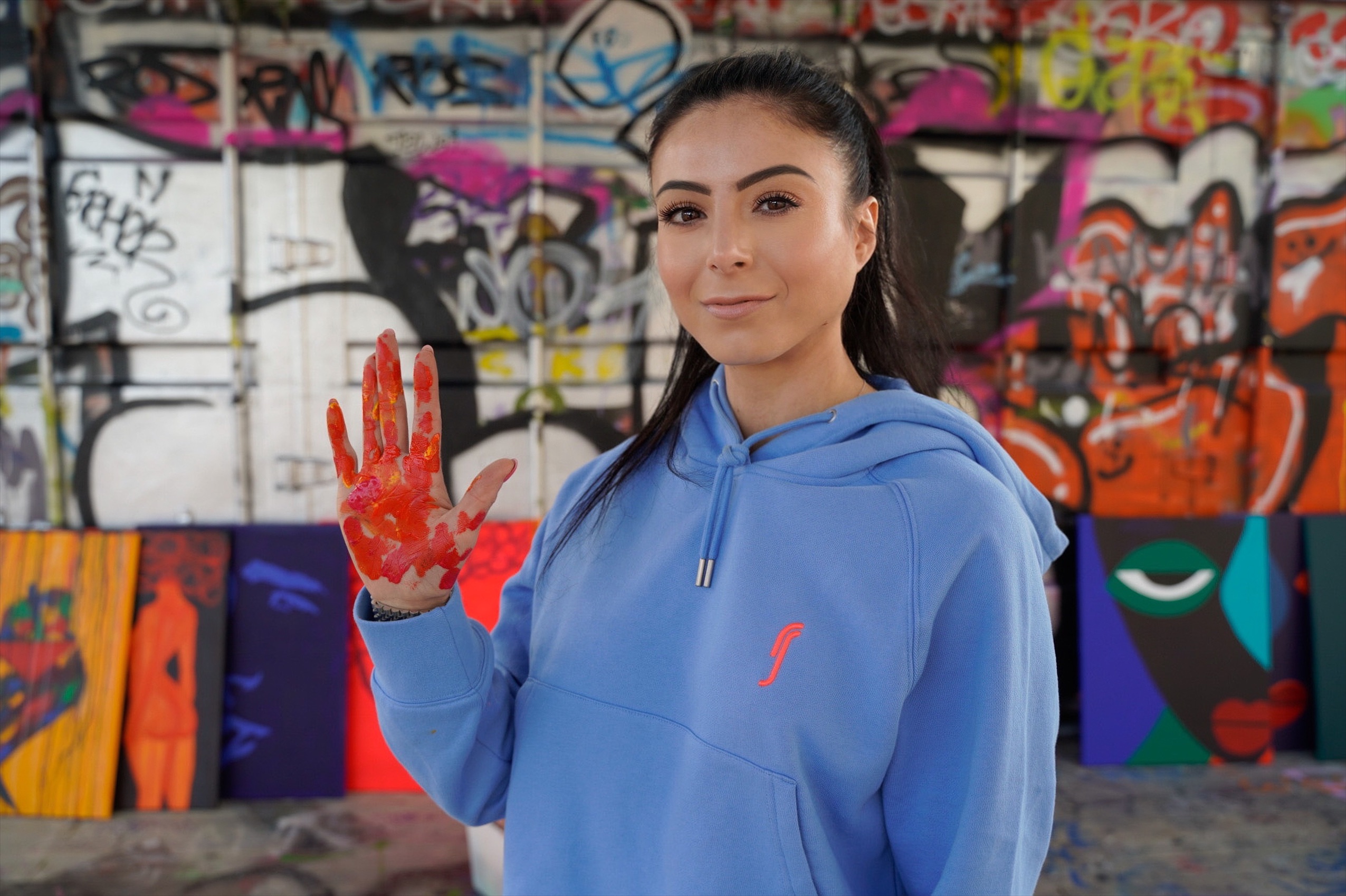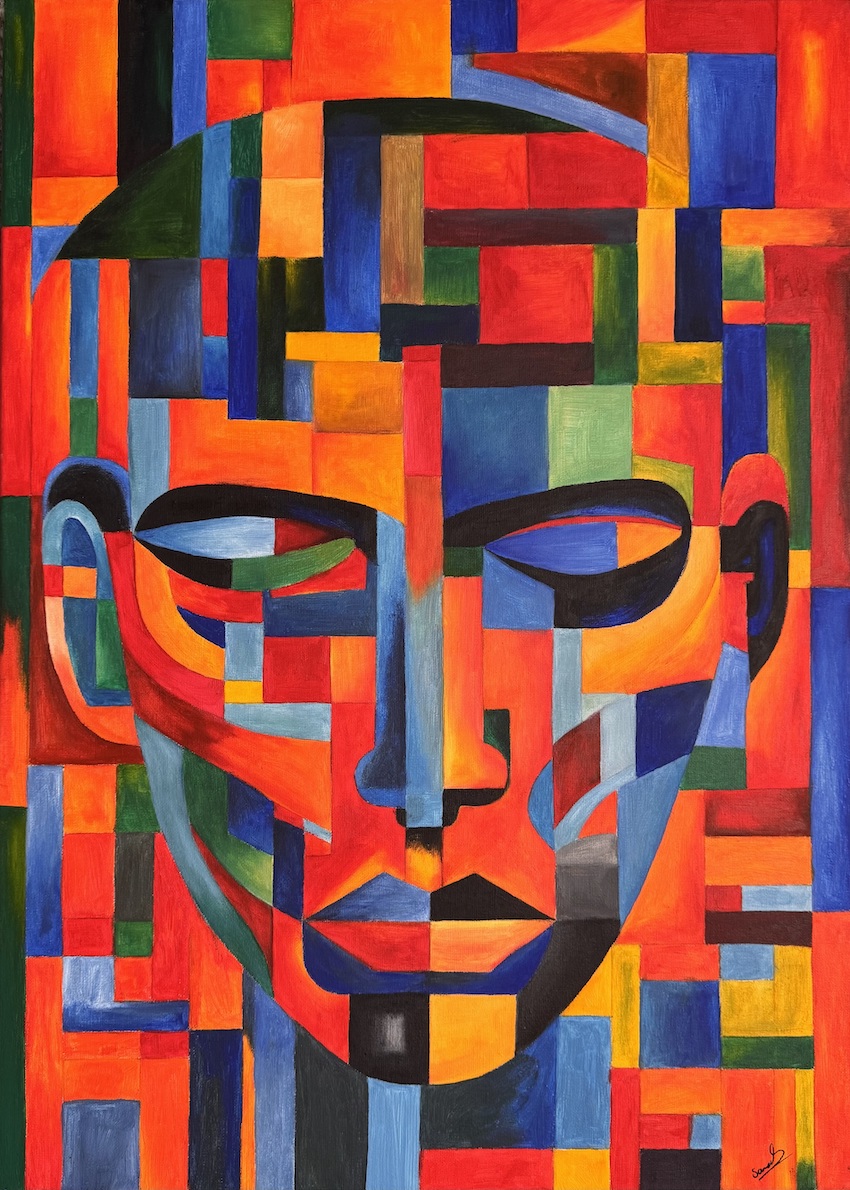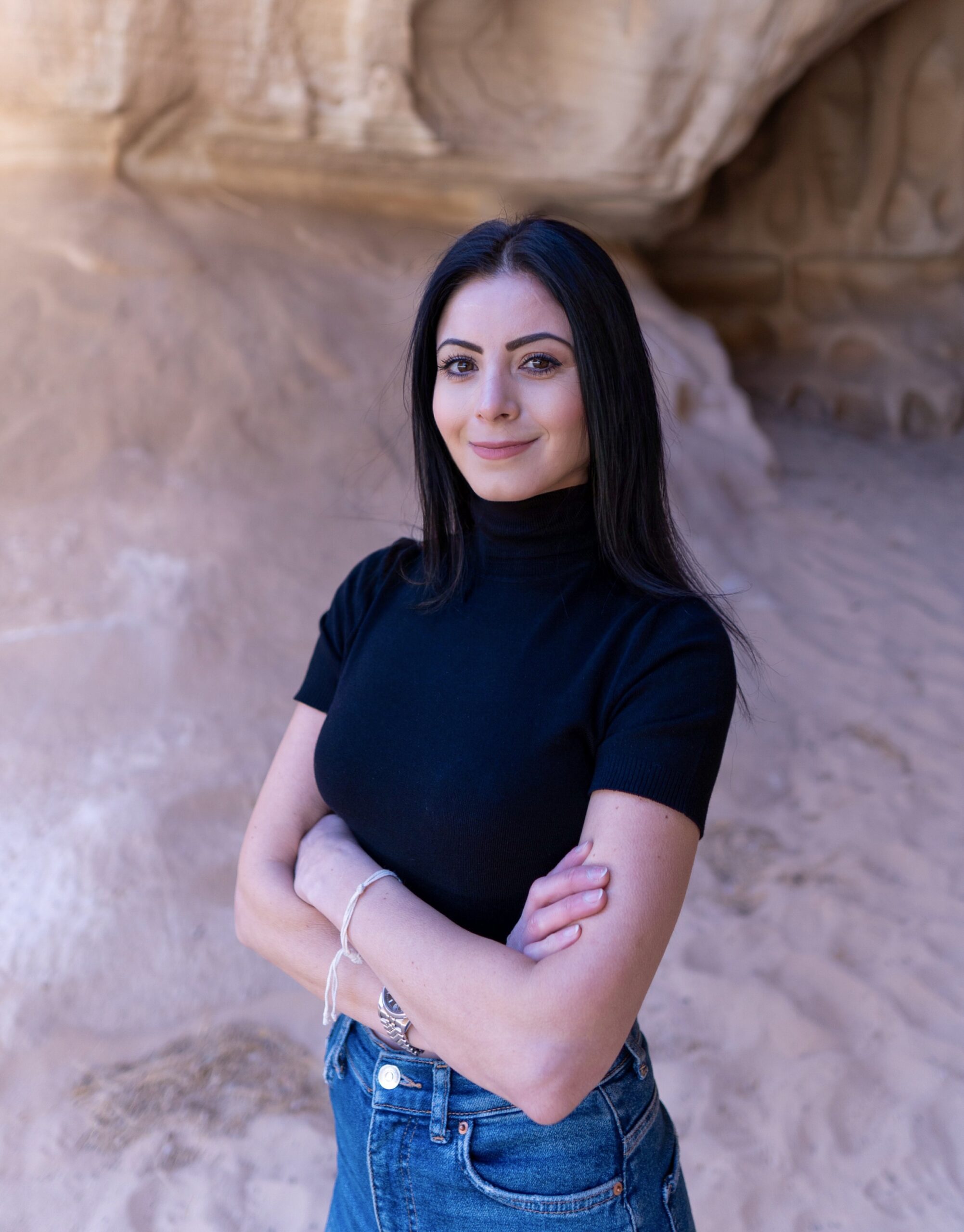Few women embody multidimensional leadership like Samah El Hage. A contemporary artist whose work has been exhibited in international platforms such as Art Basel and curated boutique hotels, she is equally rooted in the precision of computer engineering. With experience designing technological solutions for the automotive and telecom industries, Samah brings an uncommon fluency between creative intuition and analytical prowess. She is at the forefront of redefining what it means to lead as a woman in the digital age.
We had the honor to speak with Samah about her journey, her artistry, and her vision for a more compassionate and future-ready world.
Your artwork has been shown in prestigious spaces like Art Basel and boutique hotels in Europe. What emotions or narratives are you hoping to awaken in your viewers?
I want people to feel something when they look at my work, something honest, even if they can't name it. Maybe a memory, a sense of connection, or just a quiet moment that stays with them. I’m drawn to the human face and body. Not to paint what people look like, but to show what we carry inside. My art is abstract because life often is. I like it when people see a part of themselves in it, even if they weren’t expecting to. If my work prompts them to pause and sense something familiar in the unfamiliar, then it’s doing what I intended.
You’re trained as an engineer and yet speak fluently through visual art. How does your technical background influence your creative process—does logic ever become part of the composition?
Even though painting is emotional and spontaneous for me, there’s definitely structure behind it. I think my engineering side shows up in how I build my compositions, balancing shapes, layering color, and creating movement. There’s always a problem I’m trying to solve on the canvas, even if it’s not logical in the usual sense. I treat art like a system that’s constantly shifting. Sometimes it’s about finding harmony in the mess.
In your recent work, sustainability emerges as a central theme. How do you explore this concept aesthetically and philosophically in your art?
Sustainability for me isn’t just about using eco materials. It’s about what we hold onto and what we let go of. A lot of my work is about layers, breaking things down, and rebuilding them. That mirrors how I see the world right now, constantly shifting and being reimagined. I think a lot about how we stay grounded through that. It’s also about inner sustainability, our identity, values, and memory. How we carry ourselves through change.
You've led innovative projects in both the automotive and telecom sectors, industries typically dominated by men. What challenges shaped you most as a woman driving transformation in tech?
One of the hardest things wasn’t just being in the room, it was being heard without having to perform a version of leadership that didn’t feel like me and staying true to how I lead. In some rooms, if you're not loud or forceful, you risk being ignored. But that’s never been my style. I’ve had to learn to lead with clarity and empathy without compromising who I am. And over time, I saw that this approach not only works, it creates stronger teams and better outcomes. That gave me confidence to keep going, even when the space wasn’t built with me in mind.
In your talk on the podcast Debugged, you discussed the parallels between coding and creativity. Do you view technology as a medium of artistic expression?
Definitely. For me, being both an artist and a computer science engineer has shown me just how connected these worlds really are. The process is surprisingly similar; it’s about solving problems, experimenting, and shaping something from nothing.
Art is usually seen as emotional and expressive, while tech is often viewed as logical and structured. But I see them as two creative languages. Whether I’m building a visual composition or thinking through a system, both involve layers, flow, and intention. It’s all about translating abstract ideas into something tangible.
Technology, to me, isn’t just a tool; it’s a creative space. I’ve started exploring how digital forms and visual storytelling can merge. One example is my piece shown in Times Square, where I transformed a static painting into a moving digital artwork, bringing texture, rhythm, and emotion into a new format. Even something as structured as a pixel or data point can carry emotional weight when approached with the right lens.
We’re heading into a future where creativity and technology aren’t separate anymore. The artists and innovators who’ll make the biggest impact are the ones who can navigate both the emotional and the digital. That’s the space I feel most at home in, where systems and stories meet.
In your book Next Generation Motherhood, you explore how technology is transforming pregnancy and fertility. What inspired you to write about this intersection of innovation and intimacy?
The book came from a deeply personal place. For years, I dreamed of becoming a mother, but life didn’t unfold the way I had imagined. I went through a painful marriage with a partner who couldn’t commit to having a family, despite all the promises and plans. Eventually, I chose to try IVF on my own, an experience that was both emotionally and physically intense.
Since I work in tech, what struck me most was how outdated, fragmented, and lonely the fertility journey still is, even in a world driven by innovation. The systems meant to support women felt cold and disconnected. I wanted to shed light on that emotional gap. Writing the book helped me process the heartbreak, the silence around these struggles, and the power of taking control of your path even when it doesn’t look like the story you once dreamed of.
You’ve championed a new paradigm of leadership—rooted in emotional intelligence and ethics—as we navigate rapid technological change. What does “redefining the lead” look like in action, especially for women shaping tomorrow’s world?
To me, redefining leadership means letting go of the old power playbook where being in charge meant being dominant, distant, or detached. Real leadership today is about showing up with presence, integrity, and the courage to lead with empathy. It’s about being emotionally intelligent and technologically fluent. It’s not enough to understand people; we also need to understand the systems shaping their lives.
In my book Redefine the Lead, I explore how the future demands leaders who can actively collaborate with AI, data, and emerging technologies, not just manage them from a distance. This means asking better questions, designing for long-term impact, and being willing to lead through uncertainty. For women especially, it’s about stepping into spaces that weren’t built with us in mind, and leading with values like care, inclusion, and ethics.
As AI continues to reshape how we work, connect, and create, the most impactful leaders will be those who bridge human needs with technological possibility, those who bring emotional presence into areas increasingly ruled by automation. Leadership today isn’t about controlling change; it’s about co-evolving with it.
At IKEA, you hold a leadership role in digital innovation—an area still largely male-dominated. What has it meant for you to carve out space and influence in this environment?
I’ve spent much of my career driving digital innovation in areas where women are still the exception and not the norm. I’ve never tried to fit into outdated leadership styles. Instead, I focus on bringing people together, asking the right questions, and creating real impact through tech.
I have a solid technical background, and I stand confident in it. It’s helped me lead complex projects that I’m proud to have in my portfolio. But what matters most to me isn’t just the KPIs, it’s the shift in mindset.
I’ve had to trust my voice, even in rooms where I was the only woman, and show that you can lead with care and still drive transformation. Over time, I’ve seen how this approach leads to stronger and more meaningful results. Because real innovation isn’t just about technology, it’s about shaping futures that are truly worth building.

